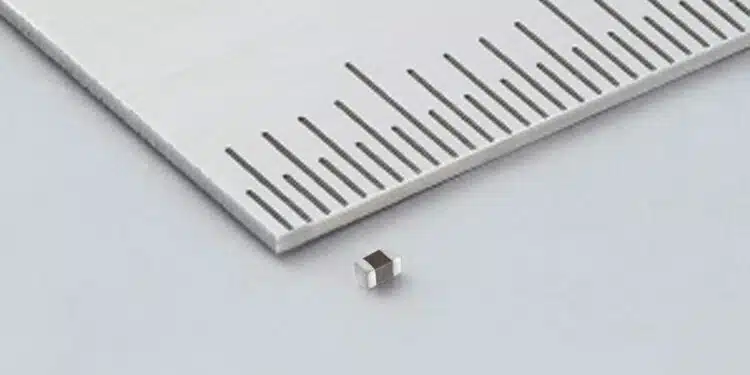Murata releases automotive-compliant 0402 inch size chip ferrite beads that deliver wide band noise suppression of high-frequency (5.9GHz) vehicle-to-everything (5G-V2X) applications.
The new BLM15VM series is ideal for automotive powertrains and safety applications. It supports high frequencies. 1000Ω (Typ.) @5.9GHz. With its compact 0402-inch size (1.0×0.5mm) can operate at temperatures ranging from -55 to 150°C. And it is compliant with AEC-Q200.
Murata Manufacturing Co. Ltd continues to push the envelope in automotive noise suppression technology with another industry first. By leveraging proprietary material technology and optimized structural design, the company’s new BLM15VM series of automotive-compliant chip ferrite beads deliver wide-band noise suppression of high-frequency (5.9GHz) 5G vehicle-to-everything (5G-V2X) applications that exhibit high impedance. Mass production to begin in July 2025.
In recent years, the use of high-frequency wireless communication in the automotive sector has increased. It is primarily used for content distribution for navigation, audio and other infotainment systems. Improving sensitivity and noise suppression in these advanced high-frequency communication systems becomes mission critical to support the connected car for ADAS (Advanced Driver Assistance Systems) and eventually autonomous driving.
RF inductors typically used for noise suppression in sub-6GHz communication have a narrow frequency band at high impedance, making it necessary to select components that match the noise frequency band. With its broad high-frequency band at high impedance, the BLM15VM series allows easy noise suppression across multiple frequency bands using just one product. Even at 5.9GHz, the chip ferrite beads within the series will typically attain impedance values of 1000Ω.
By enabling error-free high-frequency communication, which is crucial for autonomous driving, the BLM15VM series significantly improves reception sensitivity in V2X communication in the 5.9GHz bands for autonomous driving and stable operation of dedicated short-range communication (DSRC) based control systems, operating in the 5.8GHz band, for improved road safety. Additionally, since Wi-Fi 6E and Wi-Fi 7, the communication standards for wireless LAN, also use the sub-6GHz band, this product can improve sensitivity and suppress noise in consumer communication devices.
The AEC-Q200-compliant BLM15VM series of chip ferrite beads from Murata supports operating temperatures between -55 to 150°C and is supplied in a compact 0402-inch size(1.0×0.5mm). Murata is committed to expanding its lineup to meet market needs.
For more details about the Product, see the ‘BLM15VM150BH1’ page.































